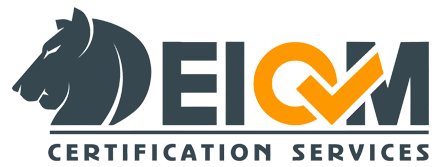IMS brings together multiple management systems within an organization, integrating them into a cohesive framework.
In today’s fast-paced and highly competitive business environment, organizations strive to optimize their operations and deliver quality products and services while adhering to various regulations. One approach that has gained popularity is the implementation of an Integrated Management System (IMS). This article will explore the concept of IMS, its components, benefits, implementation process, challenges, and provide case studies of successful implementations.
Components of IMS
An IMS brings together multiple management systems within an organization, integrating them into a cohesive framework. The key components of an IMS typically include:
- Quality Management System (QMS)
A QMS focuses on ensuring that products and services consistently meet customer requirements and comply with applicable regulations. It encompasses processes such as quality planning, control, assurance, and improvement.
- Environmental Management System (EMS)
An EMS addresses an organization’s environmental impact and sustainability goals. It involves identifying and managing environmental aspects, setting objectives for reducing environmental footprint, and complying with relevant environmental regulations.
- Occupational Health and Safety Management System (OHSMS)
An OHSMS aims to create a safe and healthy work environment for employees. It involves identifying and assessing occupational health and safety risks, implementing controls, training employees, and complying with occupational health and safety regulations.
Benefits of Integration
Integrating these management systems into an IMS offers several advantages to organizations:
- Streamlined Processes: By integrating various systems, organizations can eliminate redundancies, reduce duplication of efforts, and streamline processes, leading to increased efficiency and productivity.
- Enhanced Compliance: An IMS helps organizations meet regulatory requirements more effectively by addressing multiple compliance areas simultaneously.
- Improved Communication: Integration facilitates better communication and coordination across different departments, ensuring a cohesive approach to managing quality, environmental, and occupational health and safety aspects.
- Cost Savings: Implementing an IMS eliminates the need for separate management systems, reducing costs associated with audits, training, documentation, and maintenance.
Implementing an IMS
The successful implementation of an IMS requires careful planning and execution. The following steps outline the process:
- Understanding Organizational Needs
Organizations should assess their current management systems and identify areas for improvement. This involves analyzing processes, understanding regulatory requirements, and considering organizational goals and objectives.
- Developing Policies and Objectives
Based on the identified needs, organizations should develop policies and objectives that align with their overall business strategy. These policies should be communicated to all employees, emphasizing the importance of the IMS and their role in its success.
- Documenting Processes and Procedures
Organizations need to document their processes and procedures to ensure consistency and provide a reference for employees. This includes creating process maps, work instructions, and other relevant documentation.
- Training and Awareness
Employees should receive training on the IMS, its components, and their roles and responsibilities. Organizations should promote awareness and encourage employee participation to foster a culture of continuous improvement.
Challenges of Implementing an IMS
Implementing an IMS may come with certain challenges that organizations need to address:
- Resistance to Change
Employees may resist changes associated with the implementation of an IMS. To overcome this, organizations should provide clear communication, involve employees in the process, and highlight the benefits of integration.
- Coordination and Communication
Coordinating and communicating across different departments and management systems can be challenging. Effective communication channels, regular meetings, and collaboration tools can help address this challenge.
- Maintaining Compliance
With multiple management systems integrated, organizations need to ensure ongoing compliance with regulatory requirements and standards. Regular monitoring, audits, and performance reviews are essential for maintaining compliance.
Case Studies of Successful IMS Implementations
Let’s explore two case studies of organizations that have successfully implemented an IMS:
- Company A: Achieving Operational Efficiency
Company A, a manufacturing firm, implemented an IMS that integrated their QMS, EMS, and OHSMS. By streamlining processes and reducing duplication, they achieved significant cost savings and improved operational efficiency. They also saw a reduction in incidents and improved customer satisfaction due to enhanced quality control.
- Company B: Enhancing Sustainability Practices
Company B, an energy company, integrated their QMS and EMS into an IMS to enhance their sustainability practices. This allowed them to align their environmental goals with their overall business objectives, resulting in reduced environmental impact, improved energy efficiency, and enhanced reputation.
Conclusion
Let’s explore two case studies of organizations that have successfully implemented an IMS:
- Company A: Achieving Operational Efficiency
Company A, a manufacturing firm, implemented an IMS that integrated their QMS, EMS, and OHSMS. By streamlining processes and reducing duplication, they achieved significant cost savings and improved operational efficiency. They also saw a reduction in incidents and improved customer satisfaction due to enhanced quality control.
- Company B: Enhancing Sustainability Practices
Company B, an energy company, integrated their QMS and EMS into an IMS to enhance their sustainability practices. This allowed them to align their environmental goals with their overall business objectives, resulting in reduced environmental impact, improved energy efficiency, and enhanced reputation.
Contact EIQM
To contact us, please fill out the form below. We will contact you as soon as possible. You can also apply through this form if you would like to receive system certification or representation of EIQM Certification Body.

